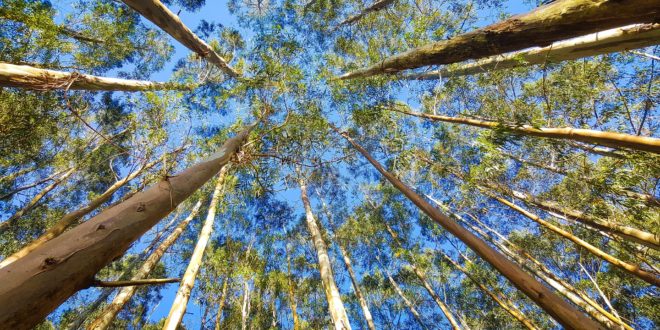In conversations regarding green technology, renewables like solar and wind sometimes take center stage. Biomass, though, is another source of innovation and progress for energy that benefits the environment. With eucalyptus as a biomass source, energy production can take off in green, progressive ways like never before.
Benefits of Eucalyptus
Eucalyptus is a common Australian plant that has a renewed relevancy thanks to biomass production. It can grow as a shrub, plant or tree, and it’s a common ingredient for medicinal uses worldwide.
Its abundance in Australia makes it a safe and sustainable source for biomass. Since it grows quickly, it can be used for years to come without damaging the planet.
For instance, cultivating a green space can take months or even years, depending on the size and material used. Eucalyptus speeds that process due to its swift growth — especially in comparison to other trees.
Plus, when more plants grow, the more carbon dioxide (CO2) breakdown there will be. Biomass can provide a new, green component while fossil fuels continue to pollute. Creating a biodiverse area sets the stage for eucalyptus use.
Eucalyptus for Biomass
The recurring benefit of eucalyptus use for biomass is its abundance and ability to grow quickly. On large plots of land, agriculturists and energy experts can dedicate entire farms or plantations to eucalyptus. Though the plant is native to Australian, it can thrive in other regions as well.
This process would start locally. Since biomass is the use of plant or animal byproduct for energy production, eucalyptus could power nearby facilities. First and foremost, it would generate energy for the production plant.
It could then expand outward into the surrounding area. Both businesses and households could use it as a power source. With multiple turbines for production, biomass could become a stronger source of energy. It all relies on growing eucalyptus and using it correctly.
For instance, separating the fibers within the plant and cooking them is one way to use them as a fuel source. The trees or eucalyptus poles would go to use as well — for things like fencing or interior construction.
In theory, the production of biomass could continue to expand and give power to more residents and businesses. It needs some attention, though, before that expansiveness becomes a reality.
Integrating Eucalyptus for Sustainability
The next step for eucalyptus biomass is to integrate it on a widespread scale. While a few plantations will stimulate local economies and businesses, sustainability requires more effort. Those who work in the energy industry will need to push for eucalyptus as a primary source for biofuel.
According to a study from 1985, eucalyptuscan enhance biomass production when it’s not the sole ingredient in the process. Though this study is older, it still maintains relevance — eucalyptus has had the potential for decades. It’s time to start integrating it.
One location taking advice from this research is New South Wales, which has planted about 6,000 eucalyptus trees. Experts hope viable biomass resources will grow from this effort. Plus, it will be a good test to see how economically beneficial eucalyptus trees can be.
If more locations follow in New South Wales’ footsteps, eucalyptus can become a biomass standard. By implementing it, we can ultimately work toward a sustainable and green energy system.
The End Goal
The end goal is sustainability, and green technology is the way to get there. In areas where solar and wind are impractical or too expensive, biomass is becoming more of a possibility. Eucalyptus is looming as a source of production for biomass, and it could be a real game-changer.



